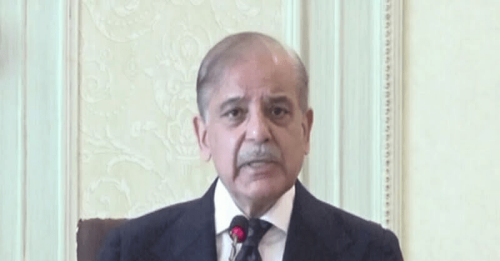
Chawkandi Art in Karachi recently held a group exhibition featuring five artists: Mahreen Zuberi, Raheela Abro, Samar Zeeshan, Sheema Khan and SM Raza. The exhibition, titled ‘Mukhammas’, drew its name from the Sufi poetic form, reflecting the artists’ exploration of the pentameter, representing the number five. Among other poets, Mirza Ghalib and Zauq have contributed to the mukhammas, by writing five-line stanzas.
Zuberi’s works highlighted the resilience of indigenous plants and discarded materials. She told this writer that, during the pandemic, she used to walk in an open area in her neighbourhood, during which she collected samples of wild plants that grew on unbuilt land, much of which is reclaimed from the sea.
She scavenged “pieces of homes” from the rubble that is dumped on open plots, and also found perforated screens, commonly known as jafri. In the artworks that are displayed, she has used the jafri motif from her own old house. The broken jafri, with a missing piece here and there, presented numerous possibilities for her personal narrative.
Abro focused on sustainability, transforming SIM cards into two dimensional miniature paintings, and three-dimensional sculptures. It needs the beauty of imagination and manual dexterity to create such sensory works. Her art served as a pertinent commentary on the environmental impact of electronic waste in a country like Pakistan, which has over 181 million cellular subscribers.
Mythology, memory and media combine to inspire the artworks of five artists
The UK-based artist Zeeshan’s poignant paintings, such as Under the Thousand Stars, captivated viewers with portraits and cultural references. Inspired by her two special-needs children, her work invited reflection on unique imagination and personal experiences. The oil on canvas titled Shinunoga E-Wa, after the massively popular song on TikTok by the Japanese singer-songwriter and musician Fujii Kaze, is one such work. Zeeshan is currently training as an art therapist at Goldsmiths University London.

Khan’s series, From Miniature to Movement, intricately combined cut-out floral shapes with scenes from the famous literary classic Hamzanama, creating a visual narrative that blended historical storytelling with contemporary themes. Khan acquired a distinction in miniature painting in the year 2005, and now holds a Master’s degree in history.
Glimpses of the bizarre adventures of the fanciful folk hero Amir Hamza emerge half visible, half revealed, in her linear cut-outs. The Hamzanama story was presumably written down during the era of Mahmud of Ghazni, and its enormous illustrated manuscript was commissioned by Emperor Akbar in 1562. Khan’s title for the series can be understood in her statement, which says that this body of work “relies on the current scenario, depicting extremely fanciful stories, often involving threatening events, narrow escapes, and violent acts.”
Raza’s enamel-on-metal works, titled Illusion I, II, and III, transported viewers into dreamlike scenarios. The small metal windows that he created, beyond which the azure sky turned dark, with the white of the moon’s crescent looking aloof, is truly intriguing. Apparently, he draws inspiration from memories of his teenage years, caring for chickens and pigeons in his backyard, and observing the changing colours of the evening sky.
‘Mukhammas’ serves as a testament to the enduring influence of the pentameter in exploration of various themes and mediums of these five artists, all of whom share ties with the Department of Visual Studies at Karachi University.
‘Mukhammas’ was on display at Chawkandi Art in Karachi from November 14- 22, 2023
Rumana Husain is a writer, artist and educator. She is the author of two coffee-table books on Karachi, and has authored and illustrated over 60 children’s books
Published in Dawn, EOS, November 26th, 2023















































Dear visitor, the comments section is undergoing an overhaul and will return soon.